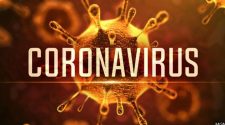The Centers for Disease Control and Prevention (CDC) put out a flurry of new guidance this week, with advice on topics like mask wearing and quarantining after COVID-19 exposure.
The guidelines are in response to threats from new, more contagious virus strains, but also indicate what life post-vaccine might look like in the U.S.
Here are five things to know about the agency’s advice.
Tighter-fitting masks provide better protection
The CDC on Wednesday released a study on how to ensure masks offer the best protection possible against coronavirus infections. The evidence showed that wearing a tightly fitted surgical mask, or a cloth mask over a surgical mask, can significantly decrease the spread of COVID-19.
The study found that transmission of the virus can be reduced by up to 96.5 percent if both an infected individual and an uninfected individual wear tightly fitted surgical masks or a cloth-over-surgical mask combination.
The best way to ensure a tight fit with a single surgical mask, according to the CDC, is to knot the ear loops and tuck in the sides close to the face.
CDC also recommended wearing a mask fitter or brace, which can fit over a cloth mask or disposable one, to make sure no air is seeping in or out around the edges.
Two masks are only sometimes better than one
Biden administration officials want people to wear masks, but the CDC is not specifically saying people need to double-mask whenever they’re outside their home.
A cloth-over-surgical combination offers the best protection, but any kind of facial covering is better than none at all.
“What the CDC is saying is at minimum, wear a mask. OK? This is what they’re saying. Make sure you wear a mask,” Anthony Fauci
“Then you want it to fit better, so one of the ways you could do it, if you would like to, is put a cloth mask over … That’s all they’re saying,” Fauci added.
During a call with reporters discussing the study, CDC Director Rochelle WalenskyRochelle WalenskyOvernight Health Care: CDC calls for schools to reopen with precautions | Cuomo faces rising scrutiny over COVID-19 nursing home deaths | Biden officials move to begin rescinding Medicaid work requirements CDC calls for schools to reopen with precautions Montana governor lifts state mask mandate MORE emphasized that the agency’s guidance on masks was not changing.
“I want to be clear that these new scientific data released today do not change the specific recommendations about who should wear a mask or when they should wear one, but they do provide new information on why wearing a well-fitting mask is so important to protect you and others,” Walensky said.
However, CDC also cautioned that double-masking does not always offer the best protection. For example, doubling up disposable masks will not help improve fit, nor will combining any type of mask with a KN95 respirator.
New virus strains increase need for safe practices
The mask recommendations come as new, more contagious strains of the coronavirus are being discovered in numerous states across the country.
But the emphasis on well-fitting masks highlights the position of health experts and administration officials: People shouldn’t need to change their behaviors just because there are new variants of the virus.
The mutations that lead to the variants can only occur if the virus is able to spread and replicate. If you stop the spread, you stop the risk of a new mutation.
Until there’s widespread immunity, people are advised to continue wearing masks, keep physical distance and avoid large crowds, especially indoors — essentially the same advice experts have given since last spring.
“So the way you stop this is you stop the transmission of the virus is with masking,” CDC’s chief medical officer, John Brooks, said during an interview on SiriusXM’s “Doctor Radio Reports.”
Officials are warning against lifting restrictions
States and cities across the country are pushing ahead with lifting coronavirus restrictions, including repealing mask mandates, allowing indoor dining and increasing indoor capacity limits.
But top health officials have suggested, gently, that even though cases, deaths and hospitalizations have been falling, now is not the time to ease up on mitigation efforts.
“These variants are a threat,” Brooks said. “This is not unexpected … but we’re at a place where we can’t let our guard down yet. I really think now is not necessarily the best time for some communities in America to be pulling back these like masking mandates, if you will.”
The variant first found in the United Kingdom is at least 40 percent more infectious than current strains, and is predicted to become the dominant variant in the U.S. as early as next month. A variant first identified in South Africa has also been spreading.
If cases of those variants begin surging, that could overwhelm hospitals and deal a significant blow to current mitigation efforts.
Walensky also urged states not to lift restrictions yet.
“We have yet to control this pandemic. We still have this emerging threat of variants, and I would just simply discourage any of those activities. We really need to keep all of the mitigation measures at play here if we’re really going to get control of this pandemic,” she told reporters at a briefing on Monday.
Vaccines are working
One positive update the CDC made this week is that people who have been vaccinated don’t need to quarantine if they become exposed to someone with COVID-19.
According to updated guidance, most individuals who have been fully vaccinated for at least two weeks do not need to quarantine after exposure to someone with suspected or confirmed COVID-19 if they have not had any symptoms.
The message there is: If you’ve been vaccinated, we know you are protected from symptomatic infection.
More importantly, the guidance signals that CDC is acknowledging for the first time that the vaccine could also prevent people from spreading the disease.
While people with no symptoms are still at risk of spreading coronavirus, the CDC said “symptomatic and pre-symptomatic transmission” is thought to have a greater role in transmission than purely asymptomatic transmission.
That information can also help employers and employees as people begin to transition back to on-site work. The benefits of not forcing people into lockdown for two weeks for possible exposure may outweigh the risks of transmission.
One caveat, however, is that the CDC says it’s not known how long protection lasts, meaning people who had their last shot three months ago or more should still quarantine if they are exposed.


















